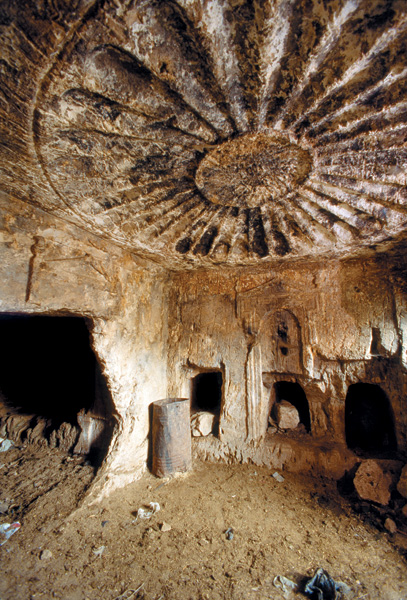Image Details

Garo Nalbandian
Like a hovering spaceship, an elegant ceiling rosette decorates a burial chamber in a Second Temple period tomb in Akeldama, south of Jerusalem’s Old City. Three loculi, or burial niches for the initial burial of the deceased, were carved into the far wall. After the flesh decayed, the bones were placed in ossuaries (bone boxes). The practice of placing bones in an ossuary instead of a rock-cut pit became a common practice from the end of the first century B.C.E. until the Roman destruction of Jerusalem in 70 C.E.
